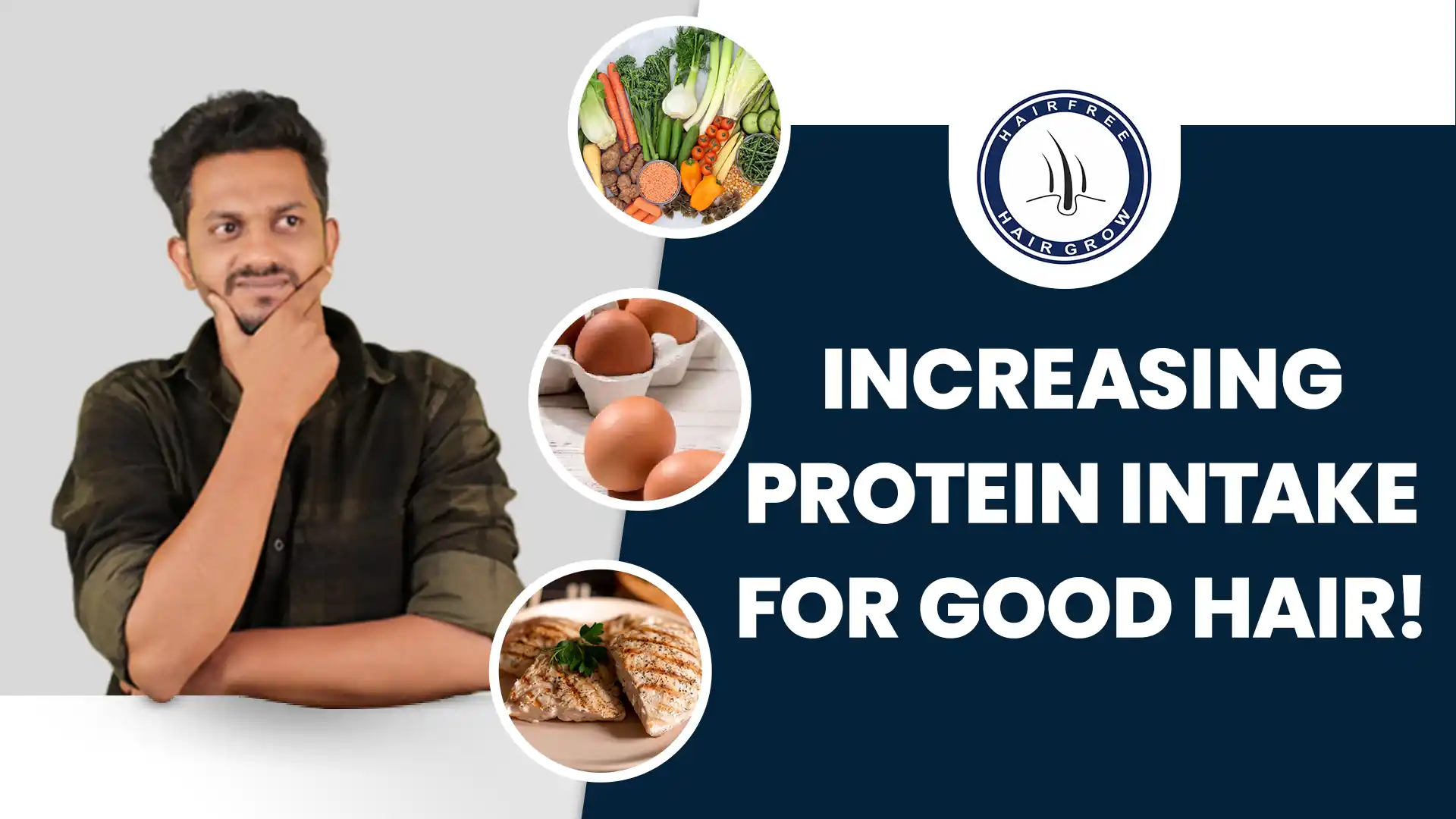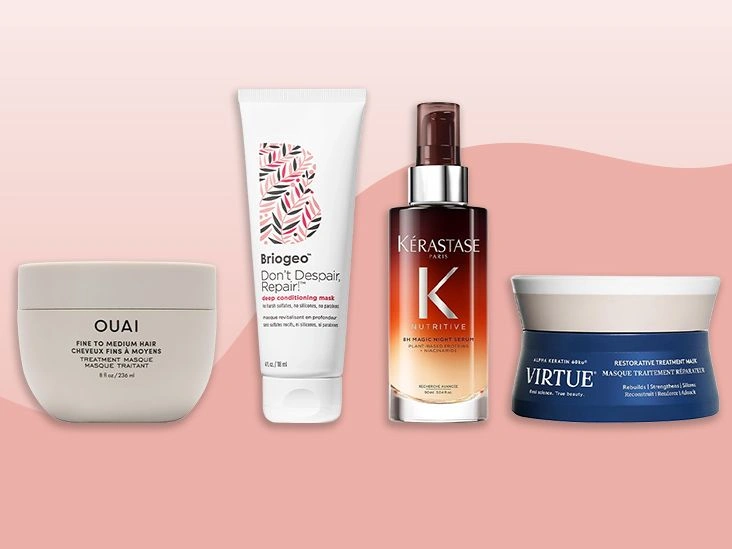A quick look at the best protein treatments for hair
- Best protein treatment for hair: | Skip to review
- Best for color-treated hair: | Skip to review
- Best for fine hair: | Skip to review
- Best protein treatment for curls: | Skip to review
- Most affordable protein hair treatment: | Skip to review
- Best overnight protein treatment for hair: | Skip to review
Sunlight, hot styling tools, nutrition, and chemical services can all wear on your hair. Dry, compromised hair often benefits from reducing factors that strip moisture and harm its internal protein matrix, known as keratin.

For hair that’s very dry or damaged, protein therapies can help rebuild the hair’s structure.
Dr. Sapna Palep, a board-certified dermatologist at Spring Street Dermatology in New York City, notes that protein treatments restore hair by “attaching hydrolyzed proteins to the hair cuticle,” which then hardens and shields it from further harm.
Below are some of our selections for top protein treatments for hair.
Healthline’s picks for best protein treatments for hair
Comparison table of the best protein treatments for hair
PriceTargetsHair typeWhen to use$24dry hair; color-treated hair; heat-damaged hairall hair types and texturesuse in place of conditioner, leave on for at least 10 minutes$70dry, damaged hair; dullness; fragile hair; frizzall types, especially colored hairin shower, after shampoo$38damage control; hydration & conditioningfine to medium hairin shower, after shampoo; can use overnight$30weak, damaged hair; frizz; drynessall curl types, any hair texturebefore shower, wet hair before applying$13dry, damaged hairall types, especially curly hairin shower, after shampoo$30dry hair and scalpall types, including color-treated hairbefore bed, on damp or dry hairHow we chose the best protein treatments for hair
Before adding any product to our list, we run them through our product selection methodology and content integrity standards. Then, using those choices, we evaluated the following:
- Ingredients: If you’re considering protein treatments, you likely want something that improves how your hair feels. We ensure each product contains quality ingredients and highlight the key components that aid hair repair.
- Price: Protein treatments come at many price points. We included a range to suit different budgets.
- Reviews: How do we gauge effectiveness? We consult user feedback and note any shortcomings in the ‘cons’ section.
- Hair types: Certain textures, like thin or curly hair, need tailored ingredients for adequate moisture and care. We emphasized treatments with features for specific hair types.
- Additional features: If you seek vegan or ingredient-free formulations, we call those out.
Quick facts about protein treatments
Protein treatments are either over-the-counter (OTC) or professional products you apply to strengthen hair and protect it from future damage. Ingredients such as keratin and collagen are common; they support hair structure and help restore oils and moisture to strands.
Anyone with dry or damaged hair can benefit from occasional protein treatments, and OTC options can help maintain results if you frequently use heat or chemical styling.
Keep these pointers in mind when trying protein treatments:
They are not substitutes for shampoo and conditioner
They’re designed to complement them for best results
Don’t overdo it
Using them more than once a month could cause further damage
Read labels carefully
Steer clear of hazardous ingredients like formaldehyde, parabens, and certain silicones
How do protein treatments work?
Protein treatments are available in several product forms made to restore moisture while repairing and guarding against additional harm.
They typically come in three primary formats:
- intensive treatments you leave on for several minutes
- rinse-out treatments used during a shower
- leave-in products applied after washing

Besides proteins like keratin and collagen, you might look for formulations that include natural or synthetic oils, for example argan oil or silicones. These components can boost softness and shine.
If you visit a stylist, they may suggest a salon-grade protein treatment applied during your appointment.
Benefits of protein treatments
Generally, a protein treatment can replenish strength in the hair, which can lead to several benefits, including:
- improved hydration
- reduced frizz
- heightened shine and luster
- less breakage
- fewer split ends
DIY protein treatments
You can also create at-home protein treatments using natural ingredients, though results may not match professional services.
Consider these DIY options to discuss with your dermatologist:
- coconut oil hair mask
- avocado oil
- argan oil for hair growth
- banana hair mask
- egg whites
Best practices for using protein supplements
“Signs you may need a hair treatment include hair that’s breaking, limp or stringy, tangled, frizzy, shedding, color-treated, or lacking elasticity,” says Palep. The appropriate treatment and care can also depend on hair type.
Most salon-grade protein treatments are designed for monthly or so use. Daily leave-in products are typically safe for regular use, though some contain potent ingredients that shouldn’t be mixed with heat or other salon chemicals. When uncertain, follow the manufacturer’s guidance.
Many protein treatments are masks applied after shampooing and left on for several minutes before rinsing and applying conditioner.
Other formulations are sprayed or applied after you shampoo and condition. After applying a leave-in treatment, you may proceed with styling as usual.
Also consider your skin sensitivity. You might avoid products that contain alcohol, strong fragrances, or perfumes if you have reactive skin.
Ingredients to look for in protein treatments
If you’re narrowing down brands, keep these ingredients in mind when shopping for the right protein therapy:
- keratin
- collagen
- creatine
- yogurt
- vitamin B-5 (pantothenic acid)
Because hair reflects overall health, consider discussing your diet with a clinician. “Maintaining a balanced, protein-rich diet is essential for healthy hair growth, not consuming enough protein can contribute to hair loss,” Palep notes.

“Maintaining a balanced, protein-rich diet is essential for healthy hair growth; not consuming enough protein can contribute to hair loss.”
— Dr. Sapna Palep, board certified dermatologist
Ingredients to avoid in protein treatments
Ironically, one thing to avoid is overdoing protein treatments.
“People with dry, brittle hair should avoid excessive protein and pair treatments with a deep conditioner,” Palep advises.
She also recommends steering clear of these ingredients:
- cocamide DEA
- isopropyl alcohol
- parabens
- polyethylene glycol
- silicones
- sulfates
Takeaway
Used appropriately, protein treatments can give your hair the reinforcement it needs to reduce dryness and damage. However, they must be used according to directions.
Daily use of a protein treatment can overburden your hair and ultimately cause more harm.
Our suggested protein therapies are a good starting point if you’re exploring options for damaged hair. Consult a stylist for severely damaged hair — particularly if it’s fine or color-treated.
To prevent dry, damaged hair:
- Limit exposure to damaging factors.
- Use a protective spray to shield hair from sun and environmental aggressors.
- Reduce reliance on heated styling tools.
- Space out color treatments as much as possible.
You can also try these 10 tips for stronger, healthier hair.
Frequently asked questions about protein hair treatments
How do I know if my hair needs protein treatments?
Dry, frizzy, or brittle hair can indicate a need for protein treatment. Other signs include breakage or a loss of usual shine and vitality.
Are protein hair treatments safe to use long-term?
Protein treatments can be safe long-term if you adhere to product directions.
OTC options, like leave-in products, are generally suitable for more frequent use, while professional formulations are intended for occasional application due to their potency.
How often should you use protein treatments in your hair?
Always follow product instructions. Some OTC treatments may be applied daily, but professional products are usually recommended monthly or every couple of months.
Can you use too much of a protein treatment?
Yes. Excessive use of protein treatments — particularly strong, professional types — can result in brittle, damaged hair.
Which hair type benefits from protein treatments?
Any hair type that’s very dry, damaged, or brittle can benefit, but protein treatments are especially useful for people who regularly use heat or chemical styling.
Curly hair often benefits because it tends to be drier by nature.
Can you use heat with protein treatments?
Yes in some cases, but it depends on the specific product.
Some products are rinsed out in the shower, while others are leave-in treatments that remain on hair before styling.


















Leave a Reply
You must be logged in to post a comment.